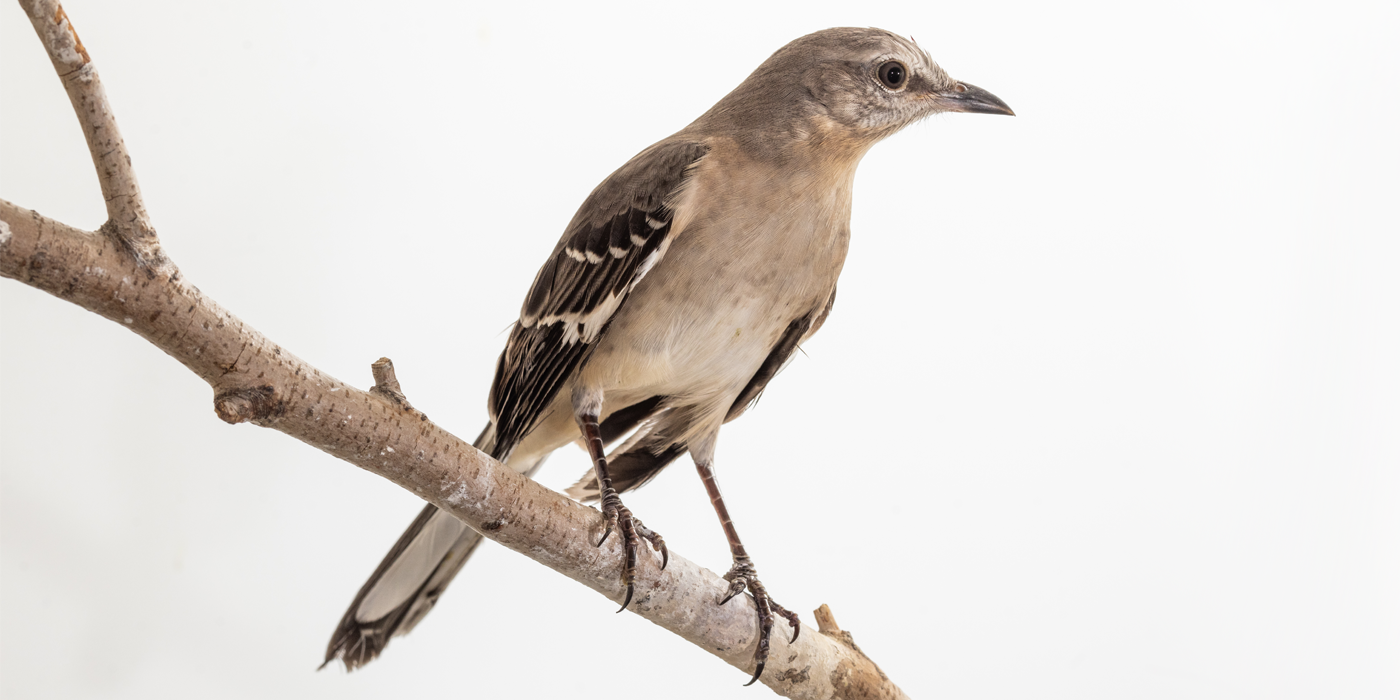Physical Description
Mockingbirds have gray-brown feathering on their heads and backs, with pale undersides and long tails that stick out while flying. Each of their somewhat short wings has two white bars and white patches can be seen on the wing while the birds are in flight. They have long, thin black bills that curve slightly downward.
Size
A medium-sized songbird, adults are 8.3-10.2 inches (21-26 centimeters) long, with a wingspan of 12.2-13.8 inches (31-35 centimeters). Generally, they weigh around 1.6 to 2 ounces (45-58 grams).
Native Habitat
Northern mockingbirds prefers open areas, such as forest edges, farms, parks and suburban backyards.
They can be found year-round throughout the United States and Caribbean, Southern Canada, Mexico and Central America. Some individuals in the northern part of their range will migrate south if the weather gets too extreme.
Lifespan
In the wild, mockingbirds live eight years on average. Individuals in human care live up to 20 years.
Communication
Widely known for their singing ability, mockingbirds sing to establish their territory and attract mates. Their songs have a series of phrases that are repeated two to six times. They can incorporate other sounds into their songs, often imitating other songbirds but sometimes frogs, dogs, or the occasional car horn. Mockingbirds sometimes sing during late fall and winter for reasons still being studied.
Food/Eating Habits
Northern mockingbirds eat mainly insects in the summer, but occasionally crustaceans and small lizards depending on the region. In winter, they eat berries and fruits, including ones found in backyard gardens. They scout out their foraging area from an above-ground perch and will descend as low as the ground when the coast is clear to look for food.
Social Structure
Mockingbirds live alone through much of the year, but males and females pair up during the breeding season. They can be fiercely territorial and will chase off a wide variety of intruders.
Reproduction and Development
In spring, to attract a mate, males perform a courtship dance which often involves leaping into the air and flapping their wings while singing. Males and females chase each other around their territory as part of their mating ritual.
Males build the underlying structure of the nest in shrubs and trees three to ten feet high, sometimes building multiple nests before the female chooses one by filling in the lining. Nests are cup-shaped; they are made with twigs on the outside and softer materials, like grasses, leaves, and bits of trash, on the inside.
Females usually lay three to four eggs that vary in color from greenish to bluish gray with brown blotches. Females incubate the eggs for about two weeks before hatching; both parents take turns feeding the nestlings. Hatchlings can leave the nest after 12-13 days followed by another week's worth of care from their parents before striking out on their own.
Help this Species
Be a smart consumer. Choose products made with sustainable ingredients, such as Smithsonian certified Bird Friendly coffees, which support farmers striving to limit their impact on wildlife and habitat.
Be a responsible cat owner, and keep cats indoors or under restraint when outside. Never release animals that have been kept as pets into the wild.
Conservation starts with you! Join a citizen science project where you can help collect valuable data for scientists. Encourage your friends and family to get involved too.
Plant native flowers in your garden to help feed resident and migrating pollinators. You'll make your lawn beautiful and help wildlife at the same time!
Smithsonian's National Zoo and Conservation Biology Institute. (n.d.). Northern mockingbird. Retrieved January 8, 2026, from https://nationalzoo.si.edu/animals/northern-mockingbird
Animal News




